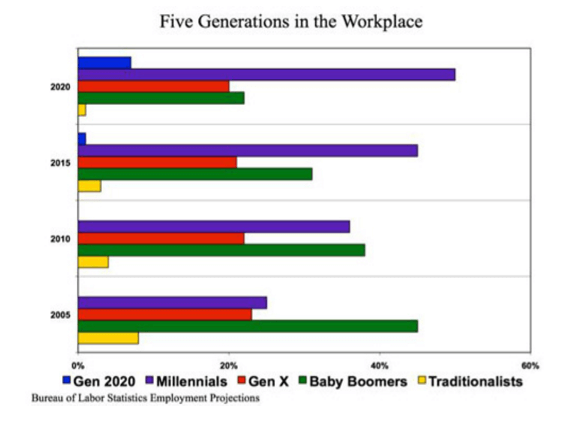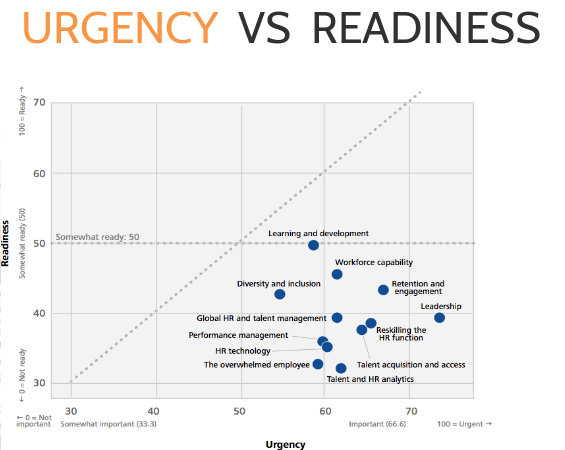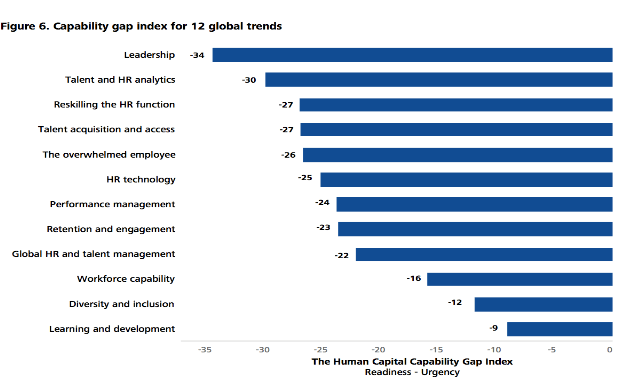The Impending Leadership Drought: Are You Prepared?
A leadership drought is coming.
Think of a desperate farmer who knows that his land is in poor condition, but he keeps farming it year in, year out, until eventually nothing will grow.
A lot of organisations out there are in the same boat.
They don’t seem to know it yet but there’s a good chance they’ll experience problems with leadership in the next decade.
In your average business right now you’ll find five generations: Gen 2020, Millennials, Gen X, Baby Boomers and Traditionalists.
These different generations all come with different life experiences, different expectations and different skillsets.
What’s interesting is that the proportion of these groups is set to change.
In just three years time, the US Bureau of Labor Statistics predicts that Millennials (individuals born between 1980 and 2000) will make up 50% of the entire US workforce.

Clearly this means that big changes are happening in the way organisations are run.
If you haven’t seen this in your industry yet, don’t worry. You soon will.
It’s time to take our heads out of the sand.
Ask yourself honestly – am I doing enough to prepare the leaders of tomorrow?
What have you done to address any concerns you have about the future leadership of your organisation?
To truly differentiate your business in the future, you need to ensure your organisation is ready for these seismic shifts in leadership.
And this takes preparation.
As Ron Price from The Complete Leader points out, many Millennials find that strategic thinking and problem solving come naturally to them.
After all, they grew up in the age of video games!
But what they struggle with is their interpersonal skills – conflict management skills in particular.
People need training in how to be effective leaders, and as it stands Millennials don’t have much knowledge or training in this area.
If these people are the future innovators and creative thinkers who will become business leaders in the next five to ten years, they need to be trained.
We must bridge the gap.
Research by Deloitte tells us that 89% of executives surveyed said that the improvement of organisational leadership is an important priority, but as you can see from the graph below, businesses aren’t nearly ready enough to implement great changes in leadership.

In fact, out of the twelve global business trends shown below, leadership has the highest capability gap!

In the past leadership has been put on the long finger, but in order to succeed in the future, investing in leadership NOW will make all the difference. Leadership is critical to business success.
So, where can you start?
When it comes to identifying emerging leaders, Ron Price makes the great point that we don’t see nearly enough encouragement in businesses today.
To start with, we must believe in the potential of our Millennials to deliver. We should give them opportunities to try and fail, and to develop their own leadership skills.
I don’t think we should just focus on people’s current performance but we should focus on their future potential. Identify what type of people you have using Science based assessments.
Over the next eight weeks, we’ll be putting together the latest research to help your business identify your existing talent and work on your leadership development.
How about you? Do you have any concerns about the future leadership of your organisation? If so, what are they?
Feel free to get in touch and let us know.
What do you do when 84% of people are not satisfied with their Team?
The Straight up: How to Make your Team Work How would you respond if we said 'let’s turn that figure around, using real life data and case studies from the best organisations.' Would you be interested? Would you be up for the challenge? Recently we...
What if your Training was made fool- proof using Science?
What if your Training was made fool- proof using Science? What if you could actually measure results?
Science allows you to be a more effective Trainer – helping others understand themselves.When you train people in self knowledge, you are empowering them to understand themselves, their communication styles and their wants. They can understand themselves better at work, at home and they know why they get frustrated in situations. They can work on behavioural change with the first stage being awareness, beginning in the Training room and filtering out to the organisation. Do not underestimate the power of a common language.
Recruiters, here’s how to onboard easily for extra stickiness!
What if your job didn’t end with filling the role? What if you began on-boarding during the recruitment phase? What type of a difference would that make to your business? Higher fees? Better stickiness with your client?

Discover Your Leadership Style TODAY!
- First step to being a leader is knowing yourself. If you don’t understand yourself how can you understand others? Learn to understand others better.
- Learn what your true behaviours and driving forces are.
- Identify what leadership competencies you are strong in and where you can improve.



